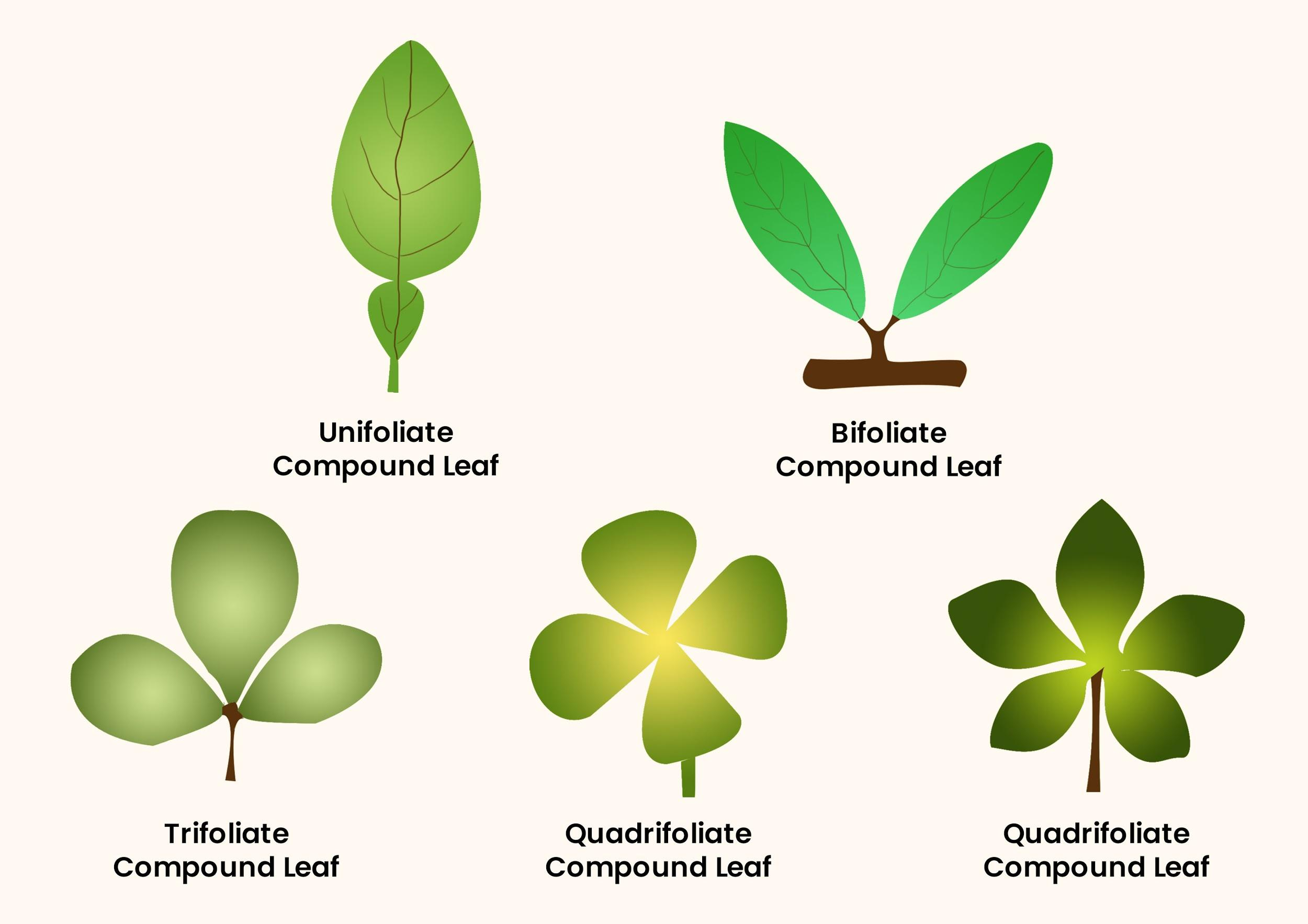
A plant with unifoliate leaves is
(a) Balanites
(b) Citrus
(c) Aegle
(d) Paris
Answer
490.5k+ views
3 likes
Hint: Unifoliate refers to plants that have one leaf-like structure present on the tip of the leaf stalk. This leaf-like structure is not actually a leaf but instead a leaflet. This is because the leaflet does not have an axillary bud which a true leaf always does.
Complete Step by Step Answer:
Leaves are of two types i.e. simple and compound on the basis of whether the incision of the leaf touches the midrib. In the compound leaf, the incision touches the midrib and converts the leaf into many tiny leaflets. This compound leaf is of two types which are pinnately and palmately compound leaf. In palmately compound leaf, all the leaflets are attached at a common point which is the tip of the petiole.
Now palmately compound leaf is of many types based on the number of leaflets attached to the petiole.
- If 1 leaflet attached - Unifoliate - Citrus
- If 2 leaflets attached - Bifoliate - Balanites
- If 3 leaflets attached - Trifoliate - Aegle
- If 4 leaflets attached - Quadrifoliate - Paris
- If 5 or more leaflets attached - Multifoliate - Bombax

So, the correct option is ‘Citrus’.
Note:
- In a pinnately compound leaf, the leaflets are attached to the midrib which is known as the rachis. Eg: Neem.
- A simple leaf is a leaf that does not have any incisions and even if it does, the incision does not reach the midrib.
- An axillary bud is a bud that grows in between the axil of the leaf and stem and has the potential to become a new flower or a branch.
Complete Step by Step Answer:
Leaves are of two types i.e. simple and compound on the basis of whether the incision of the leaf touches the midrib. In the compound leaf, the incision touches the midrib and converts the leaf into many tiny leaflets. This compound leaf is of two types which are pinnately and palmately compound leaf. In palmately compound leaf, all the leaflets are attached at a common point which is the tip of the petiole.
Now palmately compound leaf is of many types based on the number of leaflets attached to the petiole.
- If 1 leaflet attached - Unifoliate - Citrus
- If 2 leaflets attached - Bifoliate - Balanites
- If 3 leaflets attached - Trifoliate - Aegle
- If 4 leaflets attached - Quadrifoliate - Paris
- If 5 or more leaflets attached - Multifoliate - Bombax

So, the correct option is ‘Citrus’.
Note:
- In a pinnately compound leaf, the leaflets are attached to the midrib which is known as the rachis. Eg: Neem.
- A simple leaf is a leaf that does not have any incisions and even if it does, the incision does not reach the midrib.
- An axillary bud is a bud that grows in between the axil of the leaf and stem and has the potential to become a new flower or a branch.
Latest Vedantu courses for you
Grade 11 Science PCM | CBSE | SCHOOL | English
CBSE (2025-26)
School Full course for CBSE students
₹41,848 per year
Recently Updated Pages
Master Class 11 Economics: Engaging Questions & Answers for Success

Master Class 11 Business Studies: Engaging Questions & Answers for Success

Master Class 11 Accountancy: Engaging Questions & Answers for Success

Master Class 11 English: Engaging Questions & Answers for Success

Master Class 11 Computer Science: Engaging Questions & Answers for Success

Master Class 11 Maths: Engaging Questions & Answers for Success

Trending doubts
State and prove Bernoullis theorem class 11 physics CBSE

1 ton equals to A 100 kg B 1000 kg C 10 kg D 10000 class 11 physics CBSE

State the laws of reflection of light

One Metric ton is equal to kg A 10000 B 1000 C 100 class 11 physics CBSE

1 Quintal is equal to a 110 kg b 10 kg c 100kg d 1000 class 11 physics CBSE

Difference Between Prokaryotic Cells and Eukaryotic Cells




